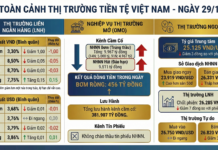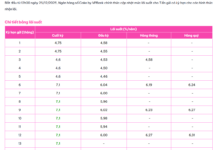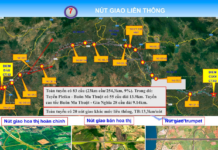Nike Faces Turbulence Amidst Innovation Woes and Market Competition
Losing Its Edge
Late February saw Nike CEO John Donahoe hosting a Zoom meeting with the company’s entire workforce. Donahoe delivered a somber message: “The company hasn’t performed at the level it should have, and I am accountable for that.”
Two weeks before that meeting, Nike had announced the layoff of over 1,600 employees.
As the CEO spoke, the Zoom chat flooded with critical comments from the 20,000 employees in attendance. “If we’re cutting costs, why not the CEO’s pay?” one wrote. Laughter emojis soon filled the screen.
The online protest reflects the deep dissatisfaction brewing within the sportswear giant, along with concerns over the company’s strategy. Since the pandemic, Nike has ceded ground in its core running category while focusing on retro hype releases and an e-commerce revolution that never quite arrived.
These moves, according to current and former employees, have eroded the culture of innovation and agility that once made Nike one of the world’s most revered brands.
Donahoe has told The Wall Street Journal in 2020 that his top priority upon taking the reins was “to do no harm.” Four years later, the company is dismantling key elements of the CEO’s strategy that have backfired as upstart competitors circle.
“I’ve done some things right and I’ve done some things wrong,” Donahoe admitted during the meeting.
Losing Ground
Strategic missteps have sparked internal debate about Nike’s identity. In its bid to boost digital sales, Nike has strayed too far from its roots as a maker of cutting-edge footwear for serious athletes, current and former employees say.
It has left the company vulnerable to upstarts like On and Hoka—companies that borrowed from Nike’s own playbook of growth—including a focus on performance over lifestyle and embracing risk-taking in innovation.

Nike CEO John Donahoe.
Nike’s once-torrid growth has stalled. Revenue in the quarter ended Feb. 29 was flat from a year earlier, and the company’s stock has declined 24% over the past year, compared with the S&P 500’s 19% gain.
Donahoe acknowledged in an interview that the brand had lost its “performance edge” and needed to accelerate its “pipeline of breakthrough innovation.”
The brand’s marketing has become too diffuse, the CEO said, and as people return to physical stores, Nike clearly needs to invest in its retail partners.
Nike executives have said in interviews that the company became too conservative after the pandemic and relied too heavily on old products. They say the company has made significant changes in recent months to refocus on making cutting-edge footwear.
Nike is going through a “dark period” and employee morale has been shaken by the layoffs, Donahoe said, but the company will emerge on the other side. “Our people have been through a lot,” he said.
Stiff Competition
Smaller brands like On, Hoka and New Balance have gained significant market share from both performance runners and casual sneakerheads. The popularity of these brands is spreading to the mass market.
In early February, Hoka owner Deckers Outdoor hired Nike veterans to run both its parent company and the footwear label. Hoka had $1.4 billion in revenue in the year ended March 2023, up from roughly $352 million three years earlier.
Nike is far from down for the count, of course. Under Donahoe, Nike’s sales have increased by 31% to $51 billion in 2023. That’s more than twice the revenue of its closest rival, Adidas. New Balance reported sales of $6.5 billion last year and upstart On is approaching $2 billion.
But Nike’s digital sales—a figure that includes direct e-commerce and partner sales—declined in the quarter ended Feb. 29. Nike CFO Andrew Campion told analysts in March that Nike expects total sales to decline at least through the rest of this year.
Former employees say that Nike’s pursuit of sales growth through limited-edition sneaker drops has taken its toll on its running footwear category, long considered a core strength.
This month in Paris, Nike unveiled a new product line for the Olympics, including running shoes with a new cushioning system using its Air technology.

In interviews at the event, executives said the company had become somewhat “risk-averse” during the pandemic, which, combined with long periods of remote work, slowed innovation. The company spent too much time looking back at its own history, said Martin Lotti, chief design officer.
“You can’t drive a car looking in the rearview mirror,” Mr. Lotti said. “The bigger opportunity is in the windshield.”
Current and former Nike executives believe the company’s future lies in its ecosystem of apps, such as the Nike Run Club and Training Club or the SNKRS app, and the data the company can mine from them to help design and sell products. Internally, leaders have long sought to draw comparisons with Apple when it comes to Nike’s culture of design and innovation.
The sportswear giant has been acquiring smaller data-analytics startups for at least a decade. Two years ago, it also bet big on the NFT craze.
One of Nike’s biggest technology investments is a multibillion-dollar project to move many of its software programs onto a single system. The new platform, called S/4HANA, is still not operational, and is three years behind schedule. The software was supposed to help with everyday operations such as managing procurement and inventory, and speed up digital sales.
As part of its accelerated push into digital sales, Nike hired roughly 3,500 people into a “global technology group,” including consumer insights and data-analytics whizzes. We are investing in “demand sensing,” “consumer insights,” and new inventory systems, executives said at the time.
Former Nike employees with knowledge of the company’s consumer-insights strategy say executives misread the data in a way that inflated demand for retro franchises.
In February’s layoffs, executives cut management from the company’s analytics and consumer insights groups. A large technology innovation team tasked with developing software to deploy Apple’s new Vision Pro augmented-reality system for design tasks, and a separate AI team were also eliminated.
Nike executives say they are entering a “supercycle” of innovation and the new line of Air products will help athletes perform better.
Wall Street Journal




































